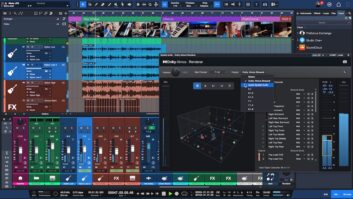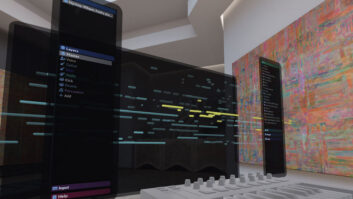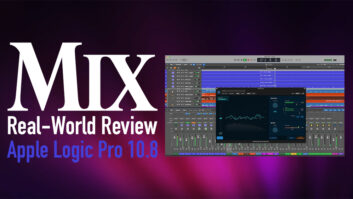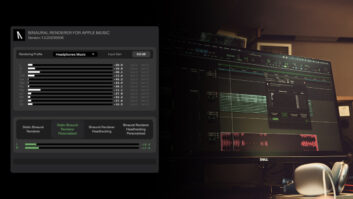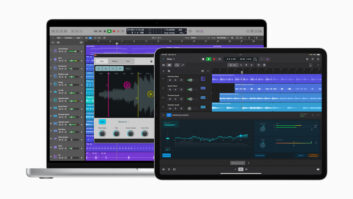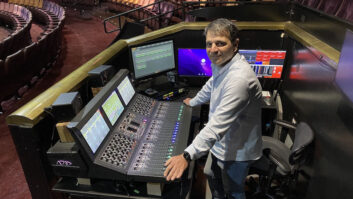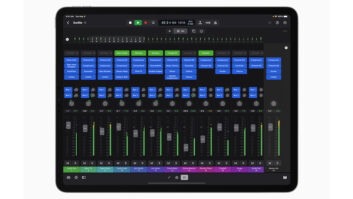Dave LeboltBy Mel Lambert.

The news in late June that Dave Lebolt had left Avid to join Apple sent a wave of speculation through the pro-audio industry. Why the move, which follows a recent exodus of staff from the beleaguered company? And what will Lebolt be taking on at Apple? For a generation of DAW users, Lebolt was “Mr. Digidesign.” Will he repeat his success with the Cupertino, CA-based computer firm?
Having joined Digidesign/Avid in 1994, Lebolt become general manager, and last year was named EVP and chief technology officer. In this exclusive interview with Pro Sound News, Lebolt discusses some of his immediate interests and the product focus he might bring to Apple.
Regarding his reasons for departing Avid, the technologist is candid: “Basically, I had been with the company for 15 years, and we have accomplished a lot of really cool stuff together.” But, he joked, “In tech, if you stay so long with one company, usually you can end up being seen as a ‘dinosaur’–or at least not in the loop about what’s new. I wanted to move on to a new chapter in my work life.
“One of the main factors was work/life balance. In my CTO position as an emissary for Avid, I was traveling a couple of weeks a month. I want more time at home and ways to approach other interests, like music. And I wanted to get some new challenges that were outside my core focus; I was missing hands-on product development.”
What changes can we expect to see within the pro-audio and -video industries during the next five years, PSN wondered?
“The kind of things that come to mind,” Lebolt offers, “include different applications for people to do work that evolves over time separately from one another. There are a number of challenges about how to make it simpler for people to solve workflow problems. Within pro-audio and -video–an area that has been close to my heart for a long time–there are [considerations] like metadata handling and how shared workgroups can work together. Or how to extend the integration of high-end systems into the mid- and entry-level, to collaborate over the web with wide-area networks. Open standards will drive customer interoperability. Avid, Apple and other companies have customers that want their [projects] to work together. The days of total islanding are over; that doesn’t work very well for customers. That’s a good trend to look at together with an overall consolidation in our business. Plus the digital transition in live-sound audio.
“The next stage in the evolution will be to migrate some of these goodies into other segments and make it easier for people to be more productive. An example: Consider the ways that people work in post production or broadcast. There, the Holy Grail is being able to work on changing projects. Project management–sometimes called Change-Conform–is a very common need that has never been solved in a super-elegant way.
“During collaborative music production, it is often hard to hand off projects from one person to another and determine which person owns which piece of it. We need to get working on the next generation of the types of technology Rocket Network pioneered–some of which I helped bring to Digidesign/Avid–to provide community integration between creative people. These are overall challenges that design teams in our industry need to solve. ‘Coopetition’–or cooperative competition–is the key; how do companies make it work for their businesses and, at the same time, also help their customers?”
And what are likely to be the breakout technologies of the next several years? “Mobile devices are clearly [important] for both creative work and also review/approval,” Lebolt states. “They can also be great for people just fooling around and being creative–little musical instruments, for example. Faster web connectivity can have a profound effect on how people collaborate. Upload speeds are not as high as we’d like…yet. And it also might be about how people get information. There is a big change from traditional [over-the-air , satellite and cable] broadcasting to web-based activity; accessing data quickly is very important.
“IEEE AVB networking–audio/video bridging over Ethernet–is a very interesting, real-time transport mechanism for moving signals. Currently, it’s in the middle of coming into being; AVB is not as well known in the video community, but it can change the way people use I/Os for computers; how they move around a large number of audio streams and video signals (instead of using SDI, for example). It will be interesting to see how AVB falls out.”
So our available technologies will continue to become more affordable, faster and offer greater creative options? “Yes,” Lebolt agrees, “I see it going that way. It is amazing how things have changed in the 15 years I was with Digidesign and Avid; I don’t see that entirely slowing down. Look at what’s happening with mobile devices and people [developing] AV-oriented applications for them. It is really going to change the way we work!”
Mel Lambert heads up Media&Marketing, a full-service consulting service for pro-audio firms and facilities. www.mediaandmarketing.com
